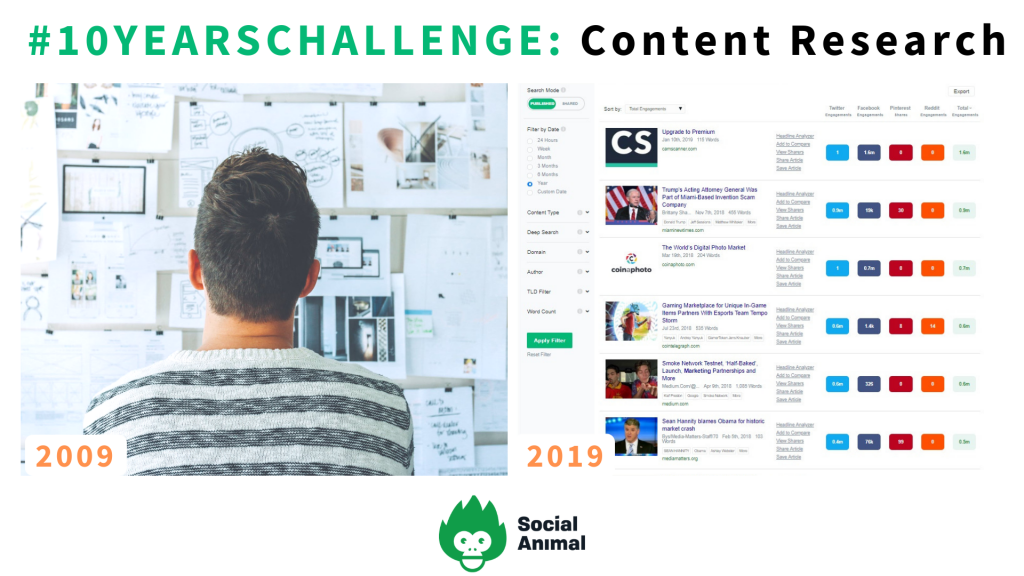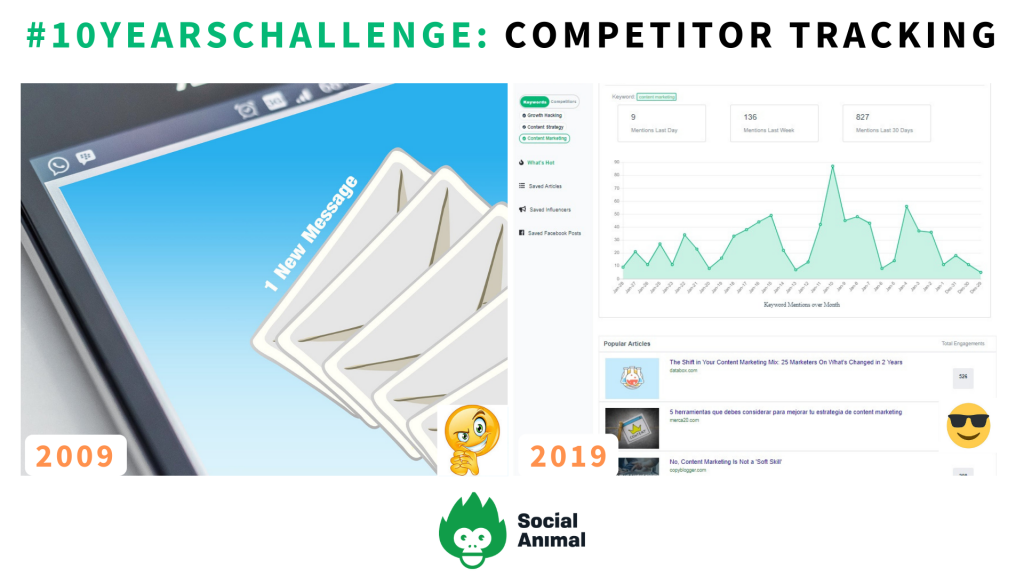Brands have been doing content marketing since the 18th Century. Content Marketing as an industry has seen phenomenal growth only after the digital wave hit in us in the early 21st century.
A lot of changes have happened in how brands communicate with their audience and content marketing as a whole has transitioned in the past 10 years.
Since the #10yearschallenge has become viral, we thought why not revisit the past of the Content Marketing Industry?
Content creation:
When online content began circulating its sole purpose was to give information. The process was not analytical and the articles were not planned. The writers wrote about anything and everything they could think of. There was no “strategy” or “tactical planning”.
Content creation in 2009:
Google Suggest paired with Google Trends and Analytics was launched in 2008. This changed the content marketing game in 2009. Content creators were able to find what their audience needed and churn out relevant content. Thus began the process of content strategy. 2009 saw marketers grappling with the sudden change in their digital environment.
- The author had full control over the articles and then keywords took over them.
- Every blogger tried topping the SERP’s with a lot of stuffed keywords and made Google become smarter with their algorithms.
- The importance of Internet Marketing kept growing and Content marketing became recognized as a cost-effective and more targeted way to reach the audience.
- Investments in SEO, PPC, and Emails started growing.
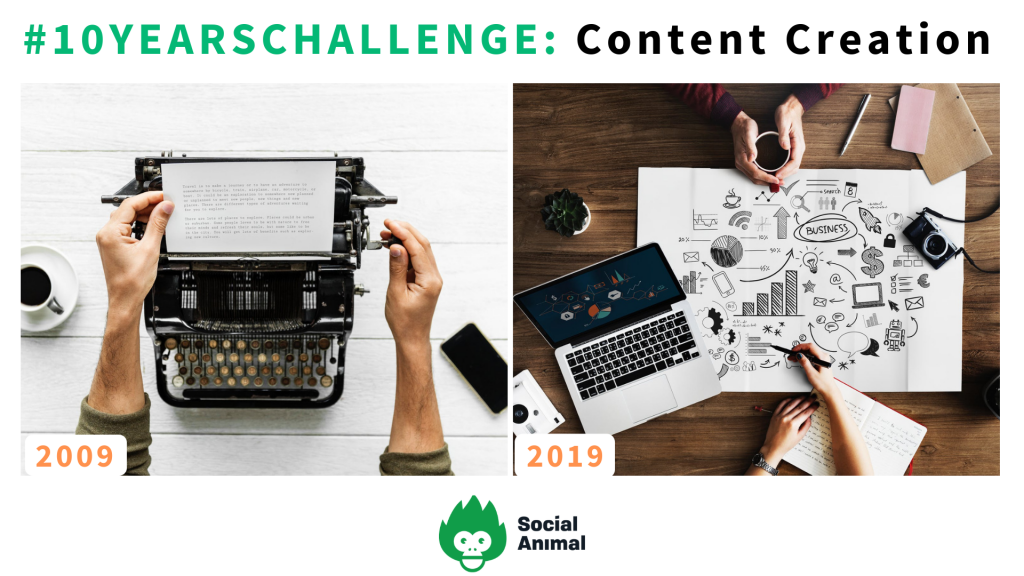
Ten years later,
- Anyone who owns a blog can create quality content aided by Content Marketing tools.
- Traditional ways of marketing are now seen as age-old practices and most of the brands have even shifted to Digital as their mainstream marketing.
- Rankings are considered as a source of traffic and people prefer Social media reach over search engine rankings.
Content Research:
A decade ago, content and copywriters did not have many sources to help them research.
The data available were insufficient and relied mostly on the writer’s experience, books, and journals on the topic.
Articles in 2009:
The digital world continued to see “Keyword stuffing”, a technique, considered webspam in which keywords are loaded into a web page’s meta tags, visible content, or backlink anchor text in an attempt to gain an unfair rank advantage in search engines.
One of the key trends in 2009 was the recognition of social media as content marketing platforms despite the continued dominance of print advertising.
Articles in 2019:
Quality content is the traffic magnet. This year is preceded by many years of successful integration of content and social media marketing with the rise of various tools that help in finding and curating content for different social media platforms.
Read this article by Lilach Bullock to know how Content research can help you win in Content Marketing.
Types of Content:
10 years before:
Blog articles were the only engaging content that dominated the Content marketing industry in 2009.
Though videos were used by top companies in their advertisements, they were never part of their content marketing campaigns.
It was the time when brands started considering websites as an investment.
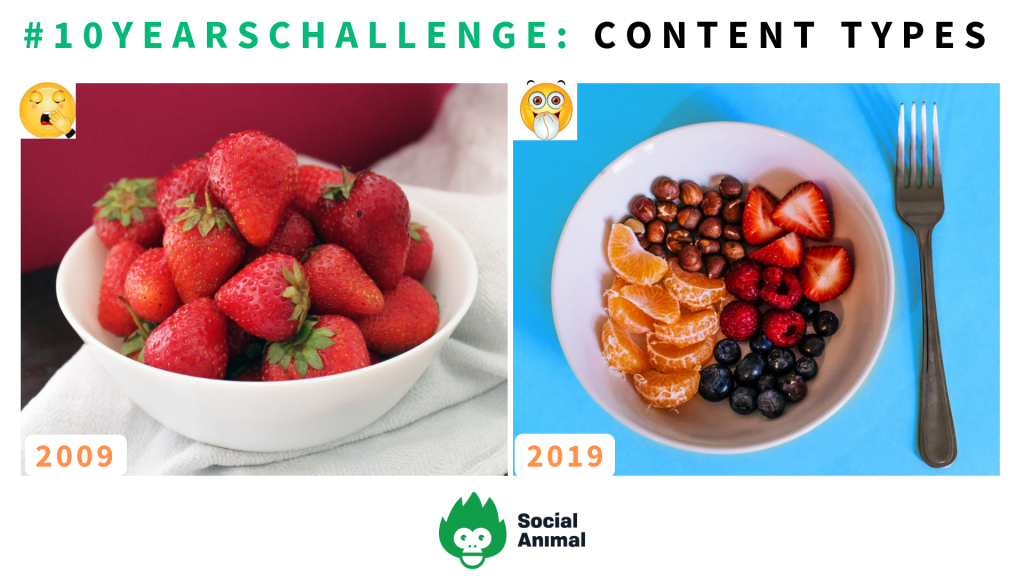
At present:
There are nearly 20 types of content including ebooks, videos, images, memes, and listicles used by brands in their company blog.
Read more about interesting types of content from the article below.
Link: https://coschedule.com/blog/types-of-content/
The Length of the Article:
Length of the article is one of the important parameters that influence the search rankings.
Content length in 2009:
The content published in 2009 varied in length but the ones that saw the light of the day were mostly long-form articles.
This was because of two reasons.
- Long-form articles could accommodate more keywords and in a period where keyword stuffing was popular, quality long-form articles (that had loads of keywords) had the best possible chance to rank.
- Long-form content held a lot of information and readers were able to get everything they needed from just one article.
Content length in 2019:
Long-form articles are still popular and are sought out but so are other varied lengths. Typically, long articles these days are almost always accompanied by any one of the following.
- Videos
- Infographics
- Gifs
- Charts
But according to research, our attention spans have dwindled and *some* people now prefer long videos or a conversational podcast to written content.
Trending articles:
2009:
Back then, the articles trending in Google, published in prestigious publishing houses of newspapers, and content aggregation sites had the maximum reach.
Social media channels were largely used for personal interactions and brands considered them only as an extra medium to market on.
Google analytics was new to Search Marketers and it became an interesting way to track the progress of an article.

2019:
It is now easy to find trending articles on each social media platform for your target keyword or domain.
We can also save them and read later using Pocket.
ROI:
ROI in 2009:
Content Marketers knew the importance of measuring ROI but did not have the proper measures or tools. The use of Google Analytics even though it was launched in 2005, was relatively unknown to many bloggers and copywriters.
At present, there are a lot of interesting factors to calculate the ROI of content marketing.
Social media shares and online mentions are interesting metrics to track the performance of online content.
You can amplify your content marketing ROI with Social Animal. Sign up for a free trial now.
Working with Influencers:
2009:
Offline marketing events like conferences always hosted influential speakers, authors, and CEOs of top companies.
One of the earliest influencers were the ambassadors of the brand or the popular figures who endorsed a product in the advertisements.
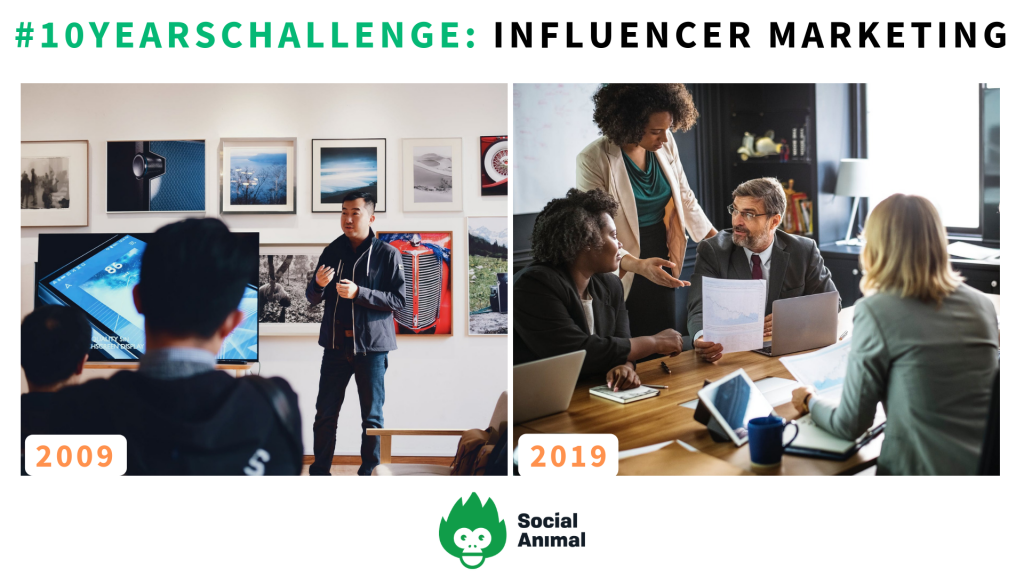
2019:
Customer acquisition rates and ROI from Influencer marketing has grown pretty impressive.
Influencer Marketing is likely to become a $10 billion industry in 2020.
Now, finding micro-influencers in social media platforms gain opportunities to work alongside top brands to captivate the attention of their audience.
Tracking Competitor Mentions:
2009:
Ten years before, subscribing to the RSS feeds or emails was the only way to track the articles of the competitor.
Publishing in websites specific to the niche was a developing trend and this has led to the development of many quality blogs.
2019:
We can now organize competitors and keywords you want to track under organizations and projects using Social Animal.
It is also possible to have multiple projects under each organization and multiple competitors and keywords under each project.
Tracking competitors help to understand the marketing efforts of the competition, create content ideas and stay tuned to the industry trends.
Channels for promotion:
2009:
Dominant channels in present like Search Engine Optimization, Email marketing, PPC, and Social media promotion were only considered as additional marketing efforts a decade ago.
The top 3 most used social media channels used by brands in 2009 was Facebook (80%), followed by Twitter (66%) and YouTube (55%).
B2B Marketers were uncertain about how to integrate Social media and Web 2.0 in their marketing campaigns.
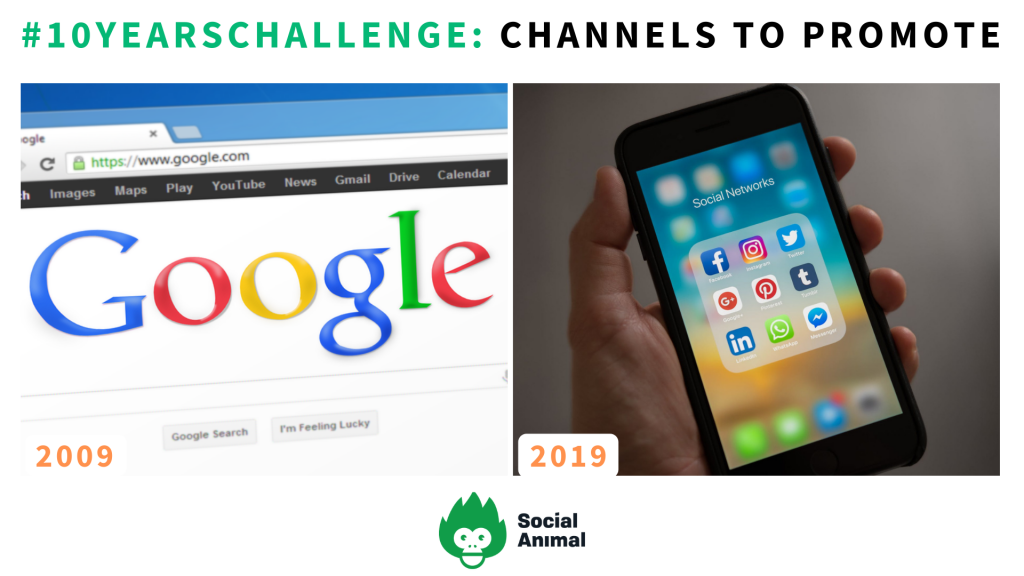
2019:
Every social media channel has now become a platform for marketers to find the target audience and promote the best content of their brand.
With frequent Social channels emerging in the market, it is always good to make efforts to experiment.
Content Curation:
This is one of the most valuable exercises that can help us build a good relationship with authors and writers in an industry.
2009:
Curation in 2009 was not actively performed by traditional brands as most of their marketing copies were print-based.
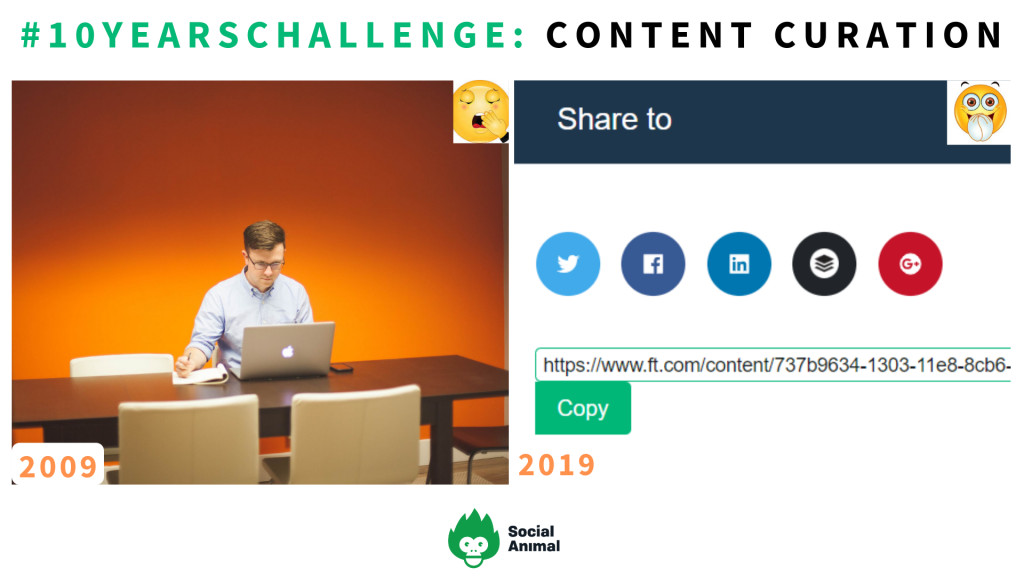
2019:
Content curation now involves a strategic approach. Finding high-quality articles with good performance can help in gaining a new audience to the blog.
This might seem like hard work. But, with the right tools (like Buffer), you can be done with a week’s worth of scheduling curated content in minutes.
Measuring content performance:
The effectiveness of content marketing can be analyzed only by measuring the performance of the article.
Back in 2009:
Tools which can provide the report about content performance were emerging.
Google Analytics and Social media reactions were the most used ways of measuring content performance.
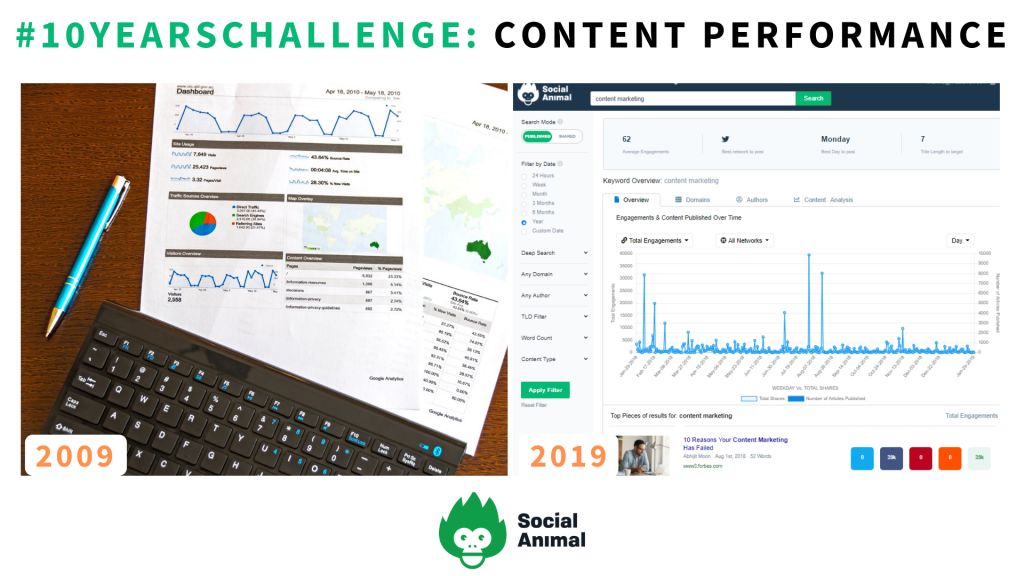
Now in 2019:
With sophisticated data analysis techniques, it is now possible to provide deep insights into how a given keyword has historically performed.
We can track a bunch of parameters including the best length for the article, the best day to post, best social media to promote etc.
Conclusion:
Many influencers and content experts predicted in 2009 that Content Marketing will become more streamlined. But, Has the growth of Content marketing met the demands and expectations of marketers?
From being a less expensive and cost-effective option to becoming a focussed marketing method, Content Marketing Industry has had a mammoth-sized growth. It has become bigger and better aided by tools, strategies, and tactics.
Marketers themselves are now smarter than ever but the ones who believed and invested in Content marketing back then are killing it now.
Traditional content marketing that uses techniques like “no plan, mass produce, write, write and keep writing” does not work now. Every step you take, every mark you make needs to be pre-planned backed with copious amounts of research.
Thank you, Matt Mroczek for suggesting edits.
I have learned a lot of interesting things being a part of the content marketing community and I hope you have too!
